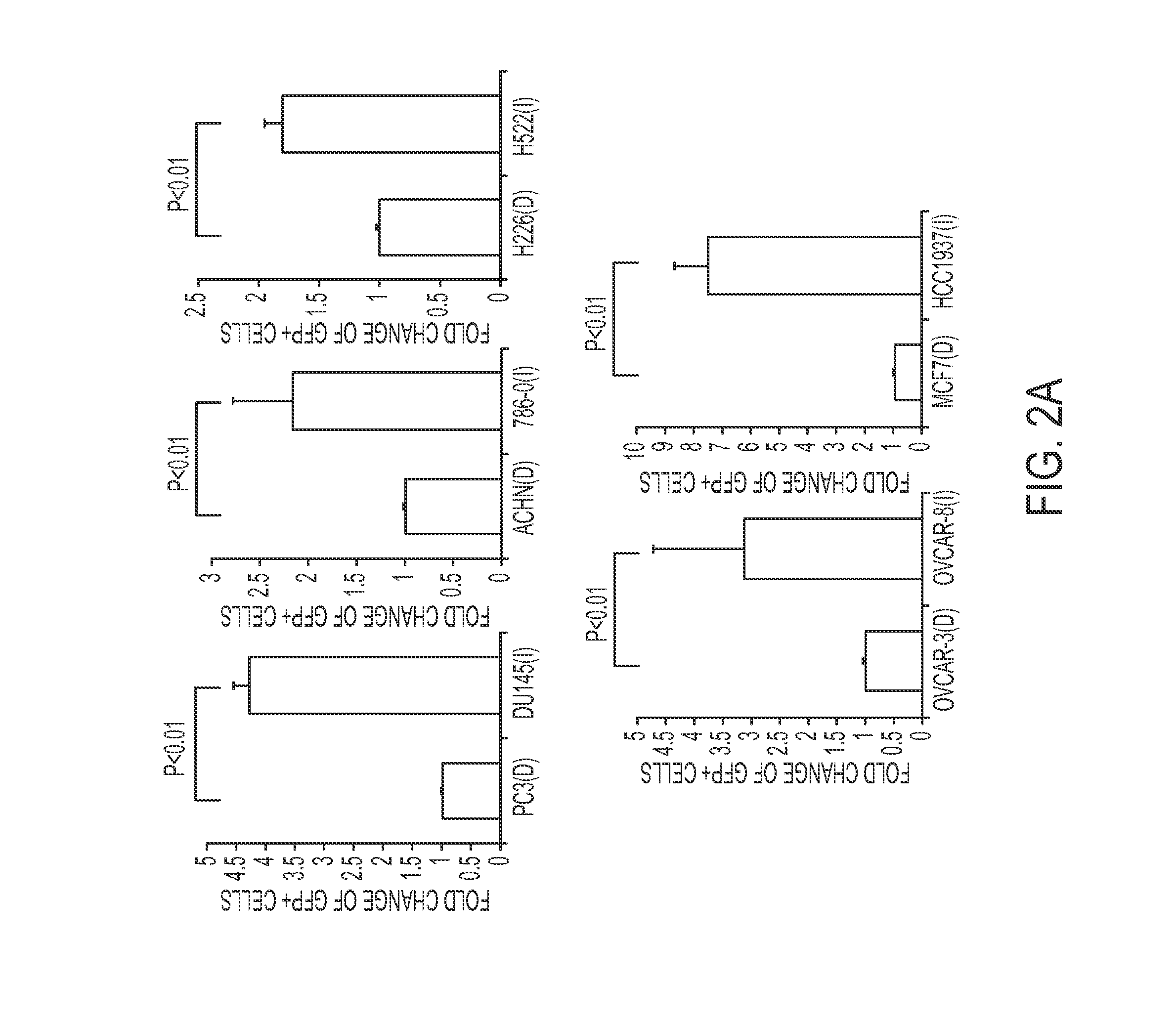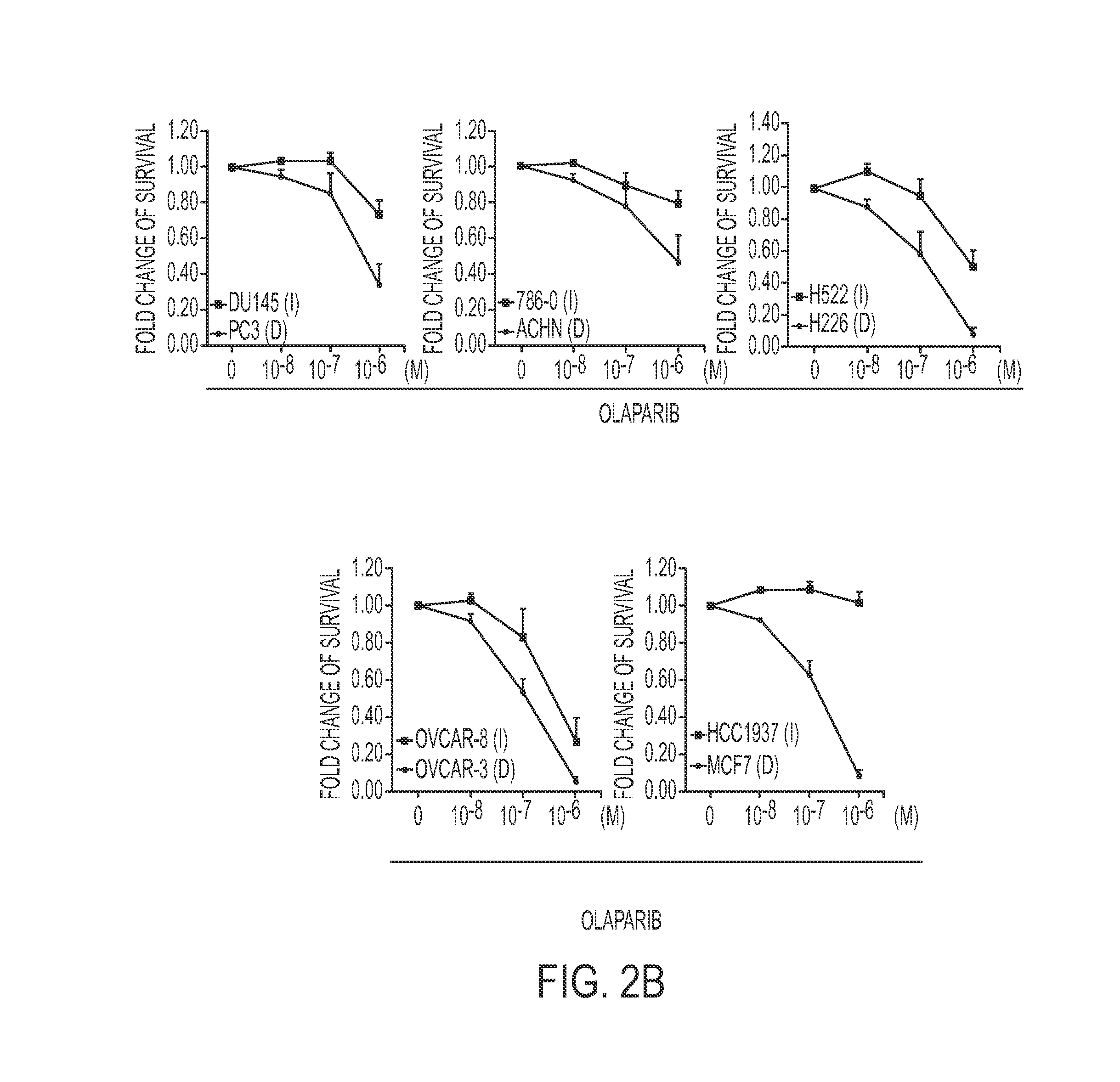Gene signature to predict homologous recombination (HR) deficient cancer
- Summary
- Abstract
- Description
- Claims
- Application Information
AI Technical Summary
Benefits of technology
Problems solved by technology
Method used
Image
Examples
example 1
A Robust Gene Signature Predicting Deficient Homologous Recombination DNA Repair
[0111]HR repair involves a variety of proteins that detect, signal, and repair DSBs (Moynahan and Jasin, 2010; San Filippo et al., 2008). Repair of DSBs is initiated by resection of the 5′ strands that generates 3′ single-stranded DNA tails at the DSB ends. DSB end resection facilitated by BRCA1 allows loading of single-strand binding protein RPA (Yun and Hiom, 2009). RPA is then replaced by key enzyme RAD51 with the help of BRCA2, which mediates homology search and restores damaged DNA (Jensen et al., 2010; Yun and Hiom, 2009). The HR repair process is coordinated by many cellular responses, such as cell cycle checkpoint, transcriptional activation, epigenetic regulation, and various post-translational modifications (Ciccia and Elledge, 2010; Helleday et al., 2008; Huen and Chen, 2008; Jackson and Bartek, 2009; Lukas et al., 2011). The number of genes known to be involved in HR repair is constantly expa...
example 2
Development of mRNA Markers and Models that Predict Sensitivity to PARP Inhibitors
[0137]Olaparib (AZD2281) and Rucaparib (AG-014699) are two commonly used PARP inhibitors (PARPi), and their half-maximal inhibitory concentration (IC50) data across many breast cancer cell lines are available in the COSMIC database. The gene expression profiles of many of these breast cancer cell lines are also available in the Cancer Cell Line Encyclopedia (CCLE) database. Within the gene expression data, each gene has multiple probes. To perform the analysis, “Duplicate Remover” was used, which is an Excel add-in developed by Ablebits to remove duplicates randomly with the default settings (on the world wide web at ablebits.com / excel-remove-duplicates / index.php). Comparing the COSMIC and CCLE databases, there were 29 breast cancer cell lines having both gene expression and Olaparib IC50 data, while 26 breast cancer cell lines had both gene expression and Rucaparib IC50 data.
[0138]We have recently sho...
example 3
Materials and Methods
[0143]Cell Culture, Antibodies, and Chemicals.
[0144]U2OS cells (American Type Culture Collection, ATCC) were maintained in McCoy's 5A medium supplemented with 10% fetal bovine serum. MCF-10A cells (ATCC) were cultured in mammary epithelial growth medium containing insulin, hydrocortisone, epidermal growth factor, and bovine pituitary extract (Clonetics). EVSAT cells (Creative Bioarray, NY, USA) were cultured in MEM containing 10% fetal bovine serum. MDA-MB-436 cells (ATCC) were maintained in DMEM medium supplemented with 10% fetal bovine serum. PC3, DU145, ACHN, 786-0, H226, H522, OVCAR-3, OVCAR—8, and MCF7 cells were all obtained from ATCC and maintained according to ATCC instructions. BRCA1 (D-9) monoclonal and TTK polyclonal antibodies were purchased from Santa Cruz (SC-6954, 1:1000) and Cell Signaling (#3255, 1:1000), respectively. BRIT1 antibodies and ZNF668 antibodies were generated as previously described (Hu et al., 2011; Peng et al., 2009). ATR (SC-1887...
PUM
| Property | Measurement | Unit |
|---|---|---|
| Current | aaaaa | aaaaa |
| Digital information | aaaaa | aaaaa |
| Level | aaaaa | aaaaa |
Abstract
Description
Claims
Application Information
 Login to View More
Login to View More - R&D
- Intellectual Property
- Life Sciences
- Materials
- Tech Scout
- Unparalleled Data Quality
- Higher Quality Content
- 60% Fewer Hallucinations
Browse by: Latest US Patents, China's latest patents, Technical Efficacy Thesaurus, Application Domain, Technology Topic, Popular Technical Reports.
© 2025 PatSnap. All rights reserved.Legal|Privacy policy|Modern Slavery Act Transparency Statement|Sitemap|About US| Contact US: help@patsnap.com



